An Interactive Musical Prediction System with MDRNNs
Dr Charles Martin - The Australian National University
web: charlesmartin.au mastodon: @[email protected]
What is this?
Learning to Predict Sequences
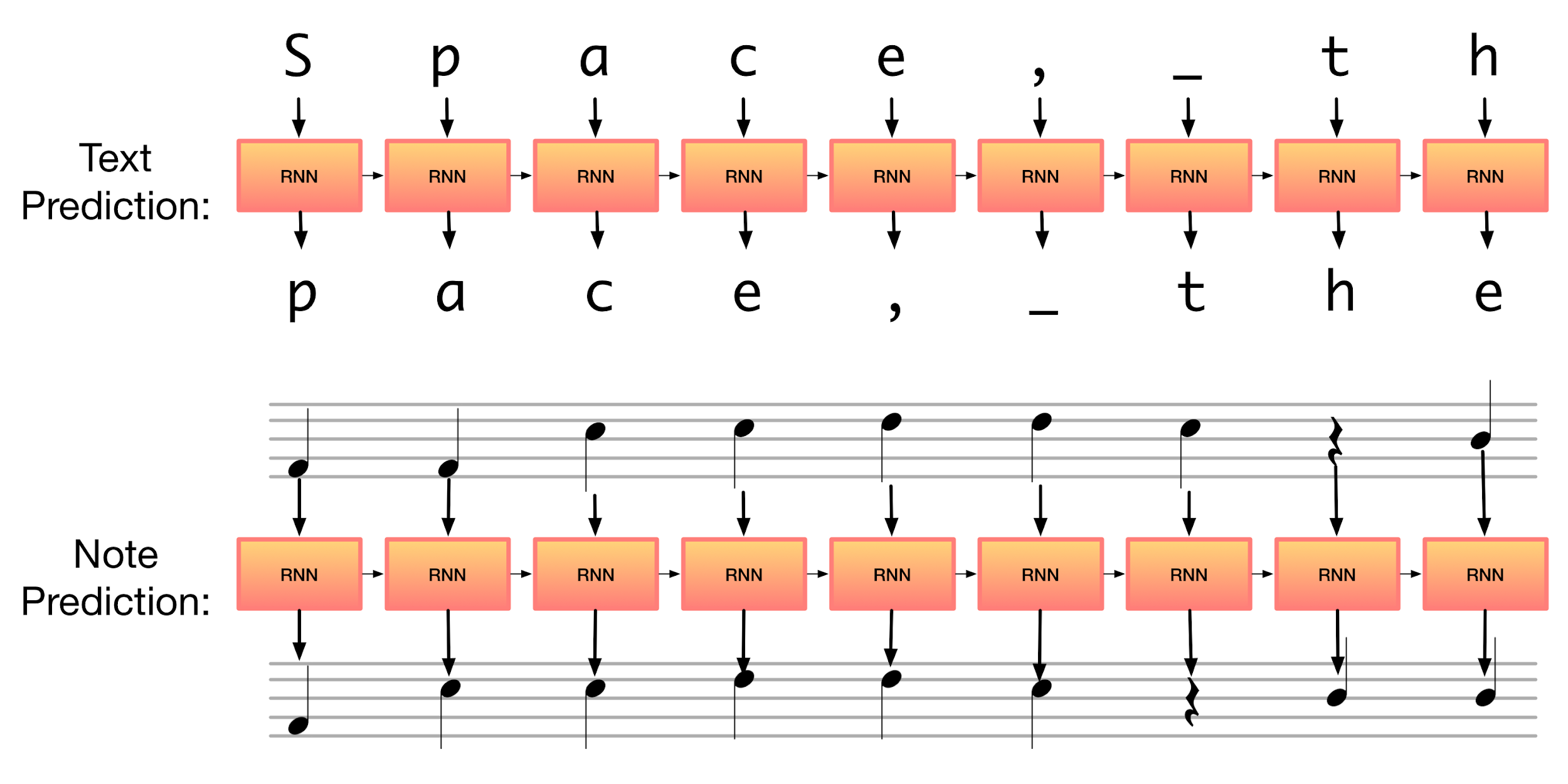
Interacting with Musical Predictions

Why is this needed?

| Creative Deep Learning Systems | NIMEs |
|---|---|
| Focus on MIDI data (e.g., Magenta Studio) | Yes MIDI, but also many custom sensors |
| Focus on digital audio | Focus on performer gestures |
| Focus on composition/artefact generation | Focus on interaction |
| Rhythm on 16th note grid | Complex or no rhythm |
| Focus on categorical data | Continuous data more interesting |
IMPS: Interactive Musial Prediction System

- An opinionated deep learning model for NIMEs
- An environment for making NIMEs that play themselves
- “Wekinator” for deep learning?
How does it work?
Mixture Density Recurrent Neural Network

Mixture Density RNN
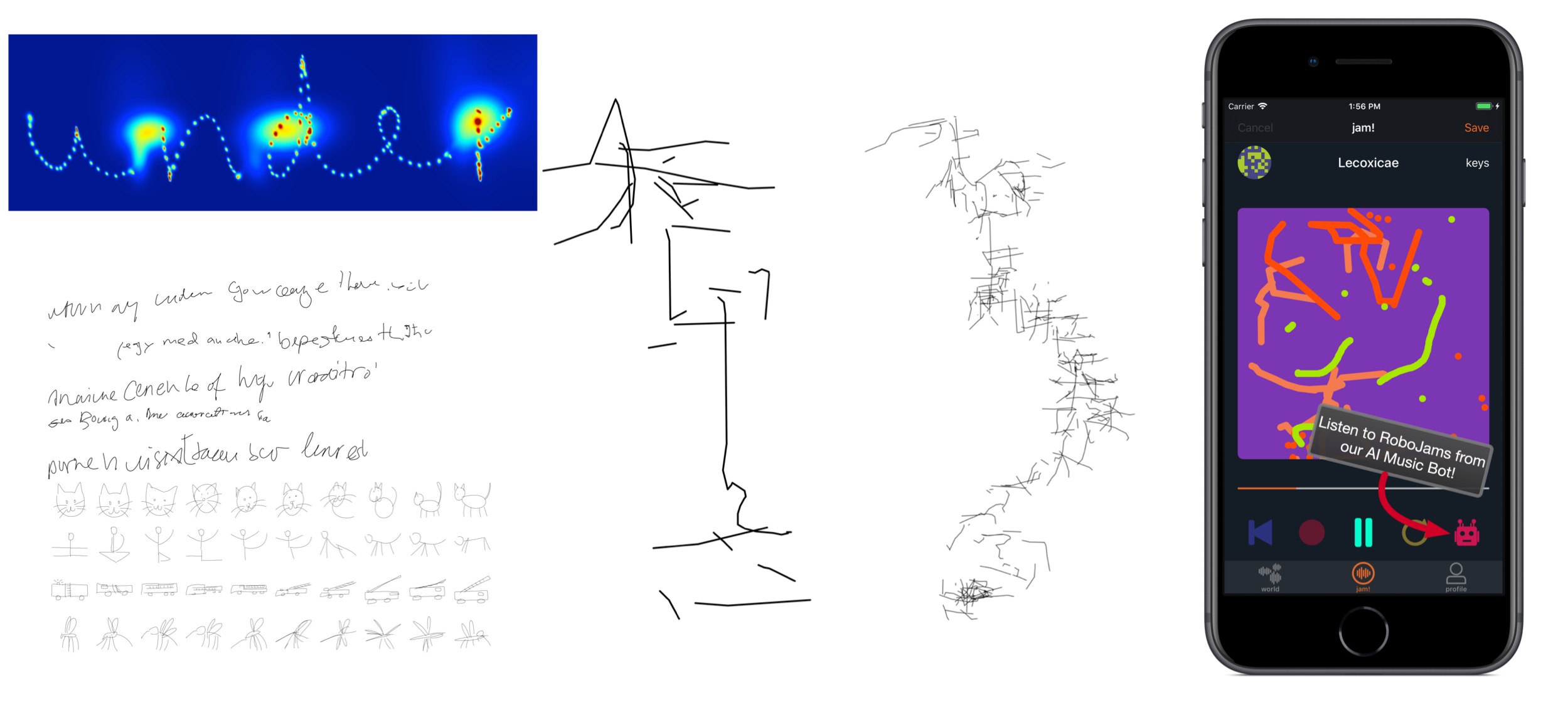
Good at predicting creative, continuous, multi-dimensional data: handwriting, sketches… musical gestures?
What to do with predictions?
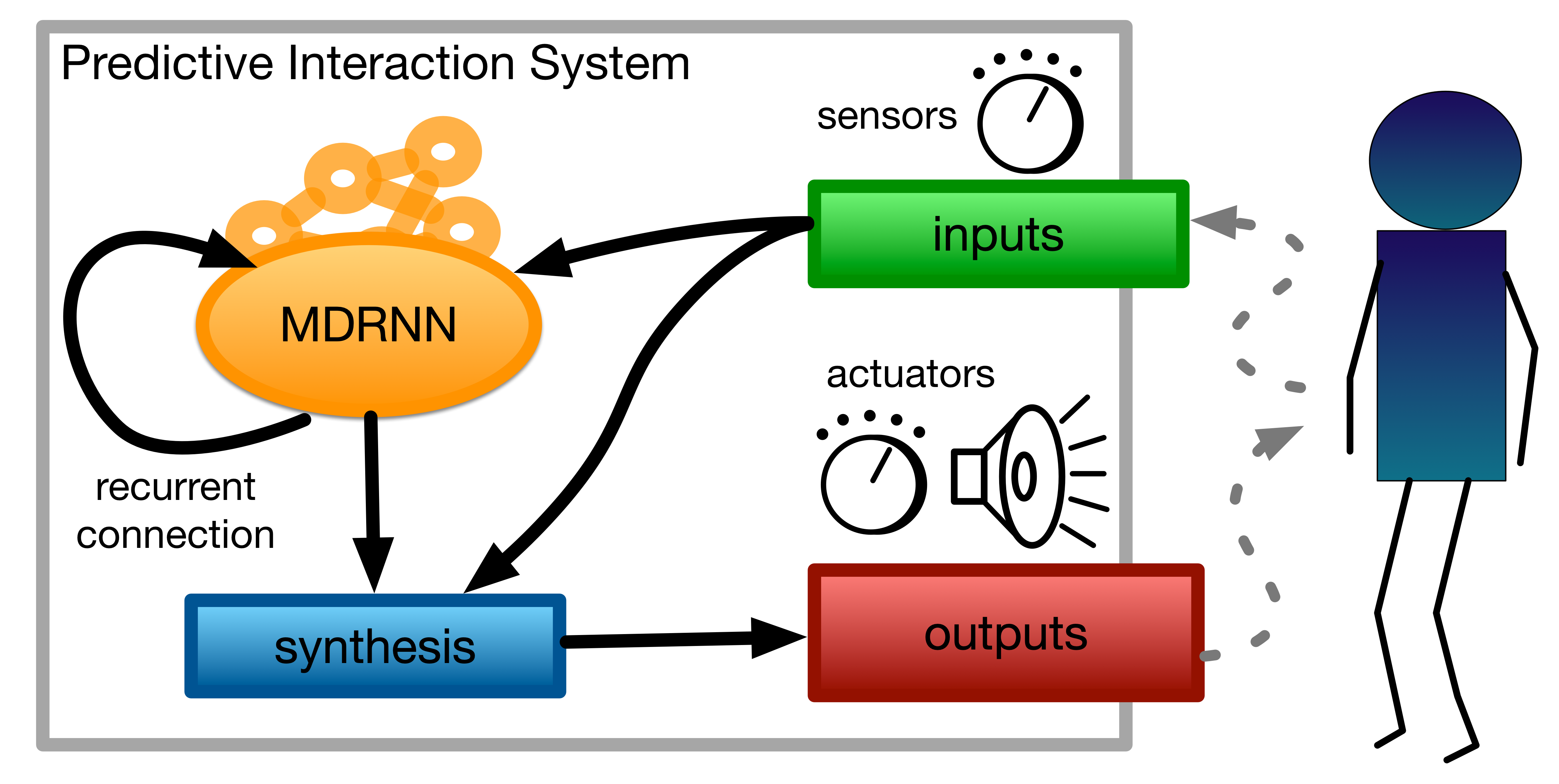
- Call-and-Response: Continue gestures when performer stops
- Layered predictions: Always predict next move from current gesture
- Duet: Two interdependent processes
Ok, how do I use it?
Three easy steps…
- Collect some data: IMPS logs interactions automatically to build up a dataset
- Train an MDRNN: IMPS includes good presets, no need to train for days/weeks
- Perform! IMPS includes three interaction modes, scope to extend in future!
Is this even practical?
Deep Learning in NIMEs??
- Is it practical for real-time use?
- How do the MDRNN parameters affect time per prediction?
- What are “good defaults” for training parameters?
- Do you need a powerful/expensive computer?
Test Systems

Results: Time per prediction

Time per prediction (ms) with different sizes of LSTM layers.
Results: Time per prediction
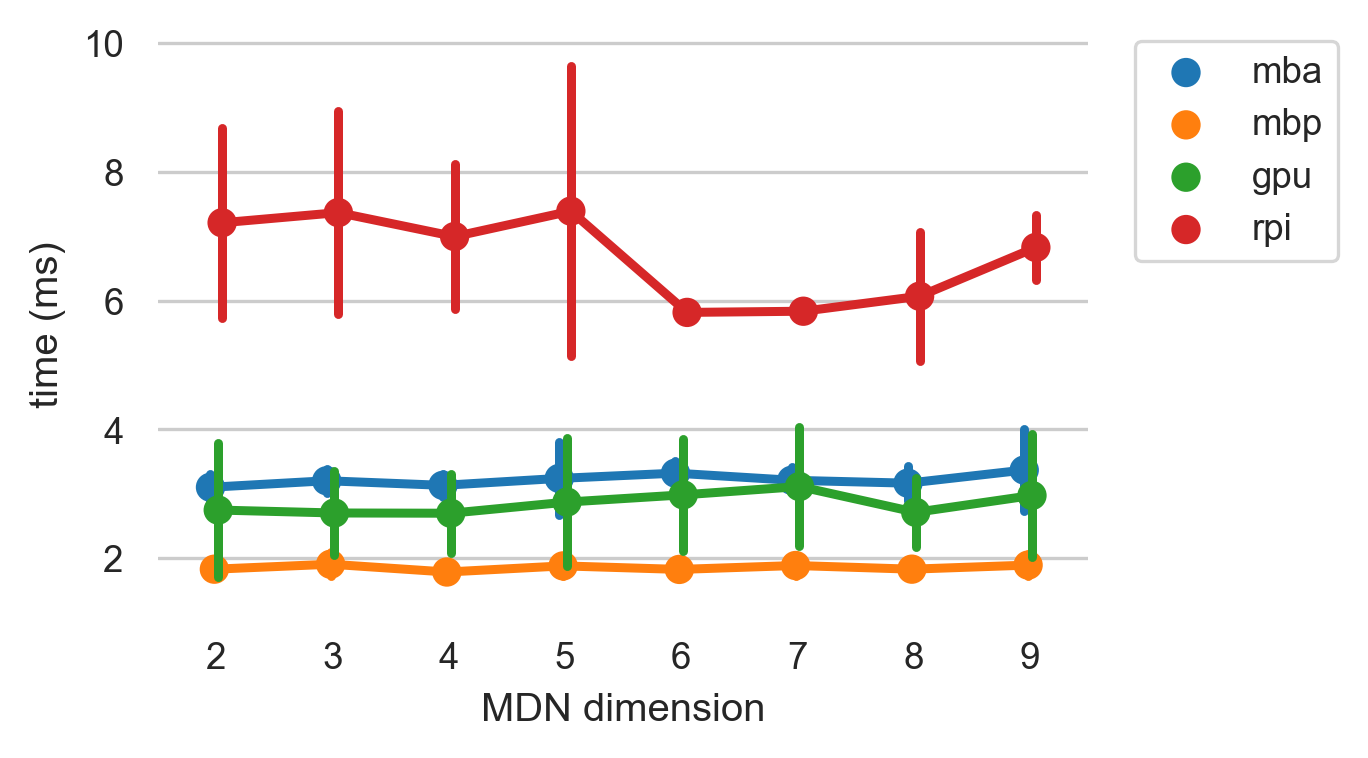
Time per prediction (ms) with different MDN output dimensions. (64 LSTM units)
Results: Training Error vs Validation Set Error
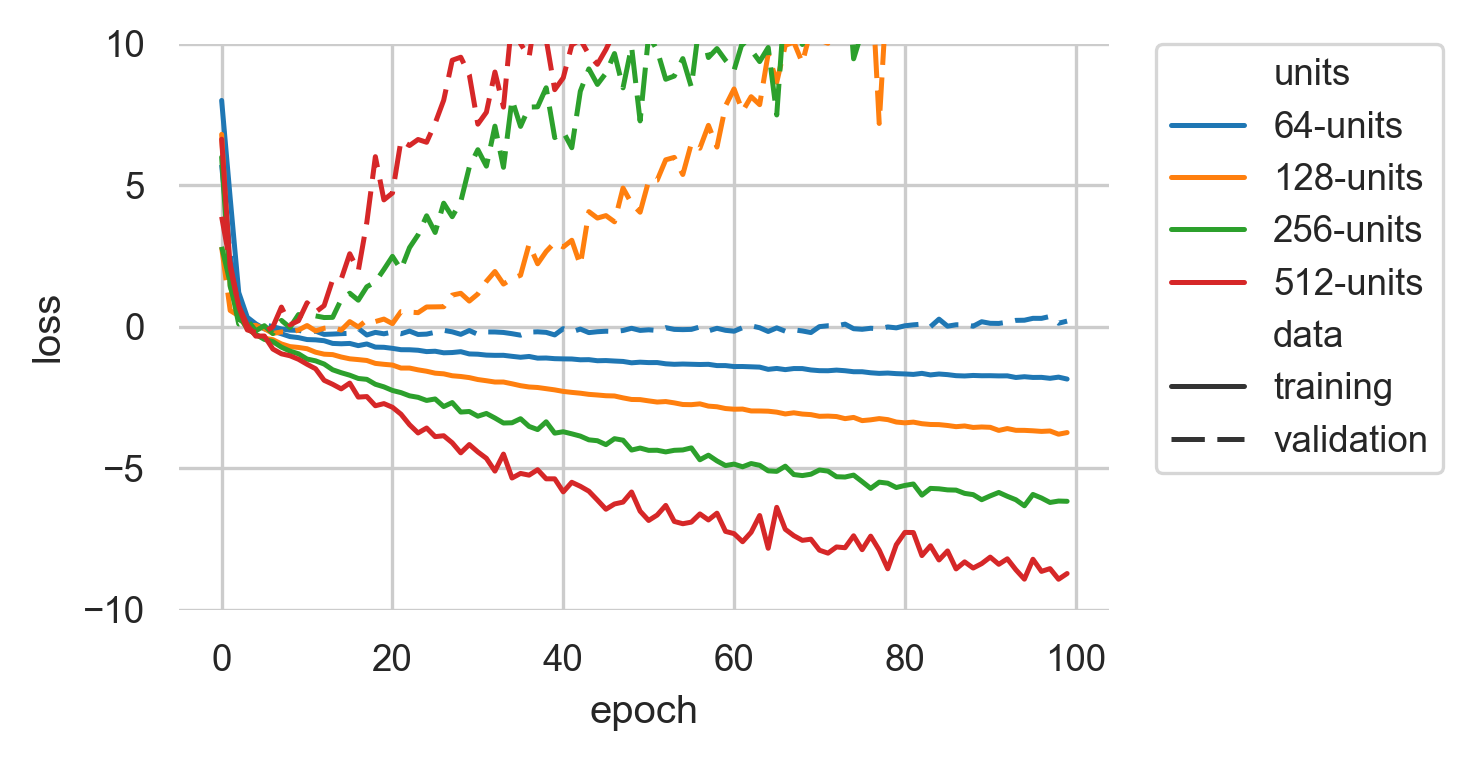
12K sample dataset (15 minutes of performance)
Takeaway: Smallest model best for small datasets. Don’t bother training for too long.
Results: Training Error vs Validation Set Error

100K sample dataset (120 minutes of performance)
Takeaway: 64- and 128-unit model still best!
Results: Exploring Generation
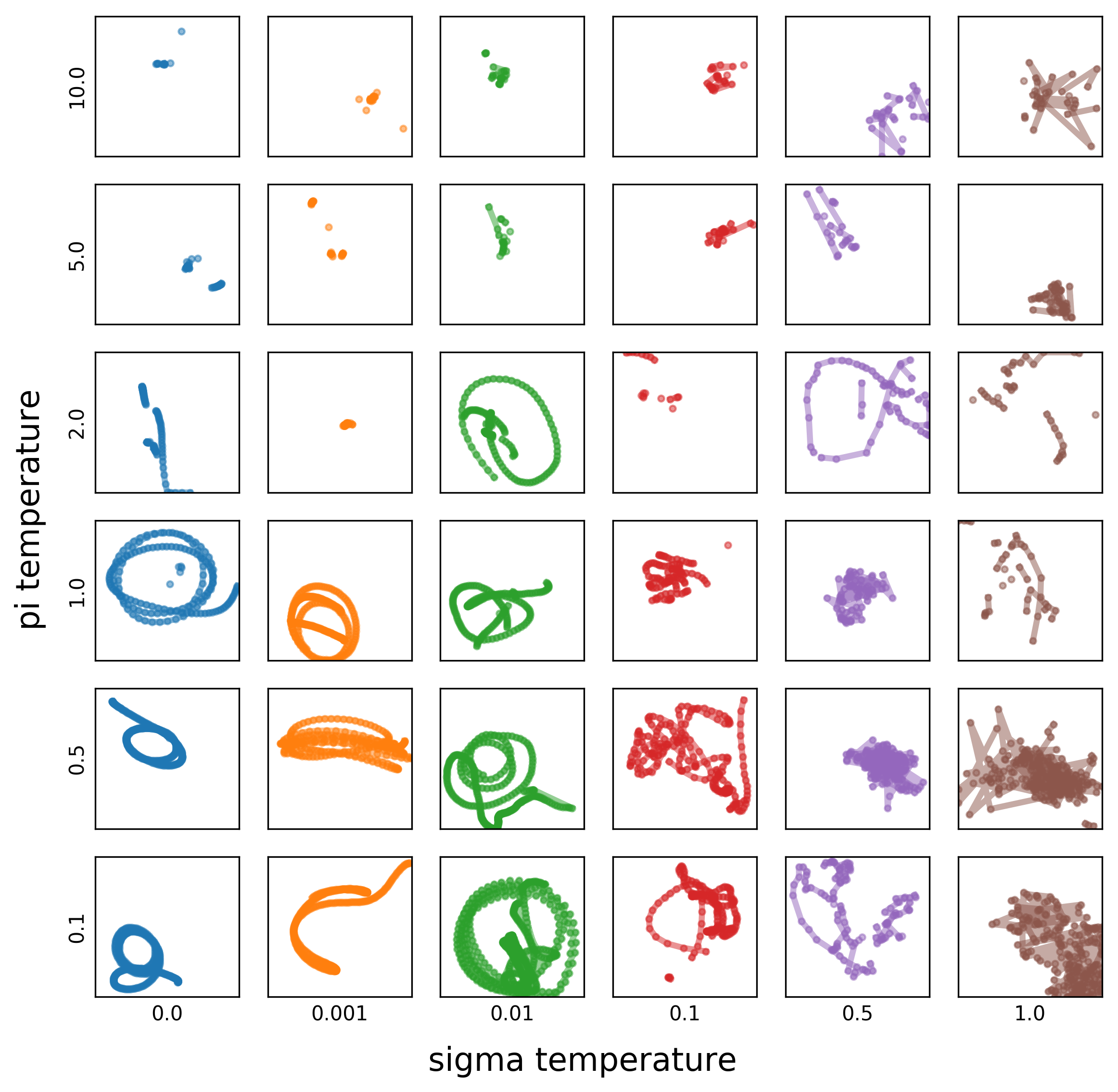
Takeaway: Make Gaussians less diverse, make categorical more diverse.
Try it out!

- Available on GitHub
- Try with your NIMEs!
- Hack if you want!
- Add an issue with problems/results!
Twitter: @cpmpercussion
Website: creativeprediction.xyz/imps